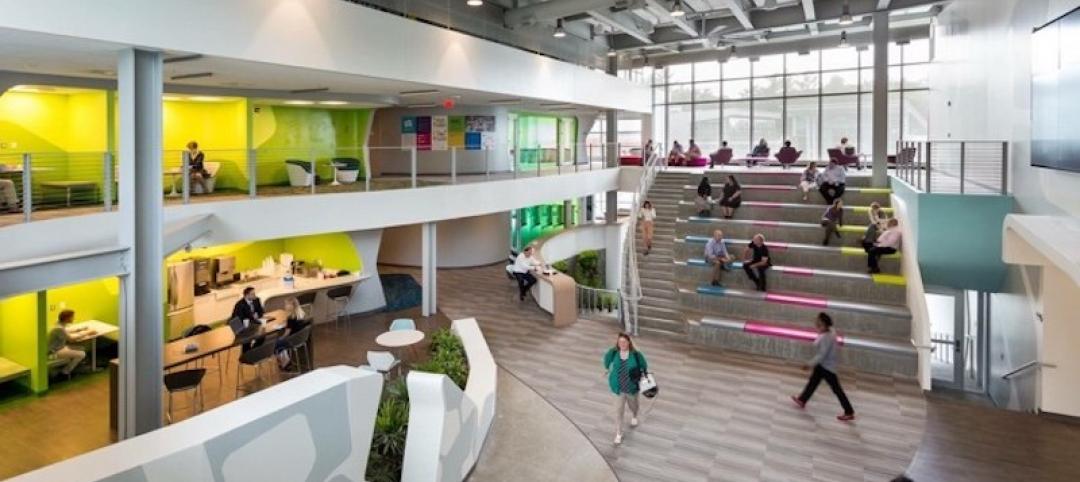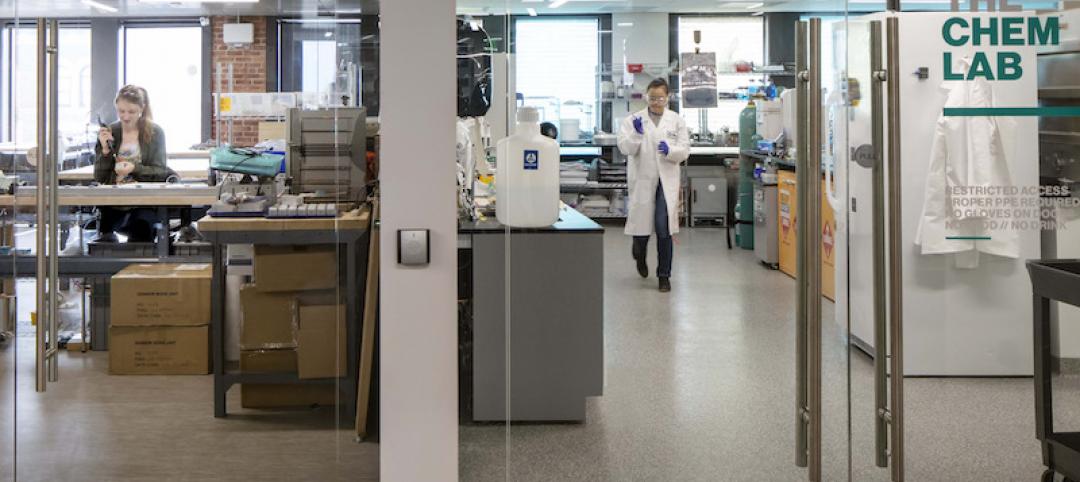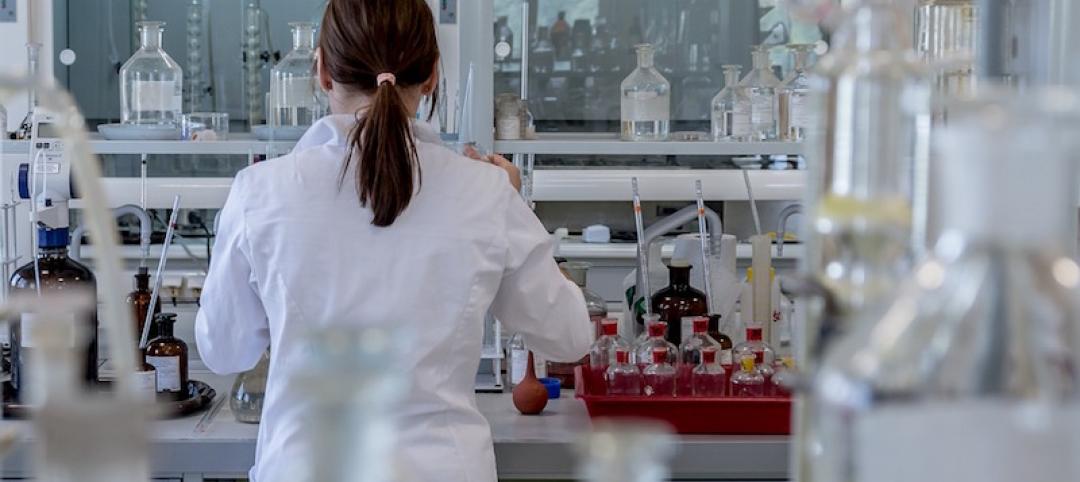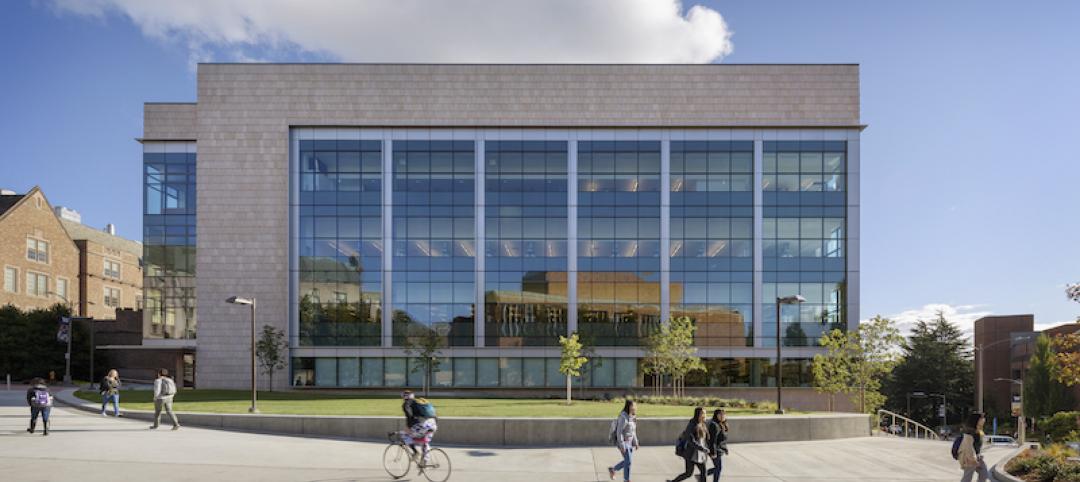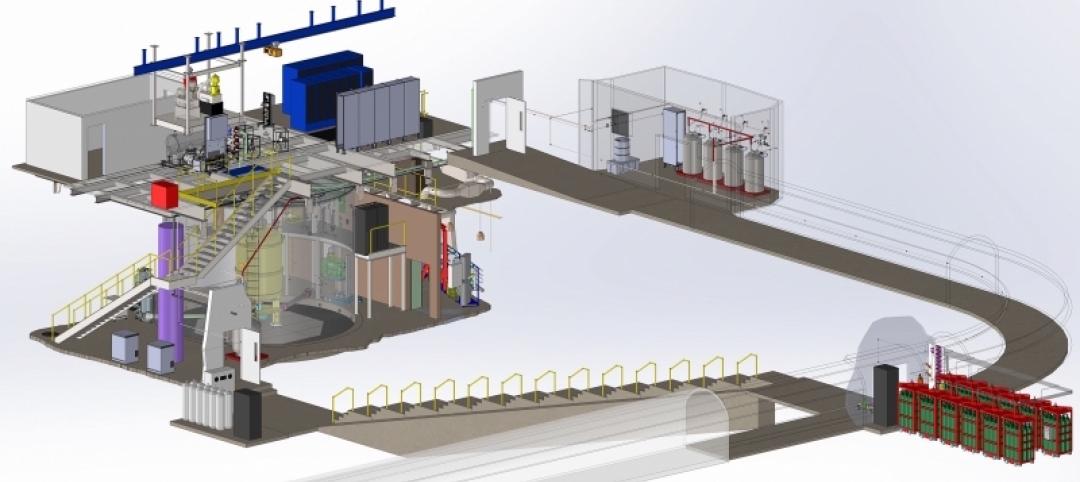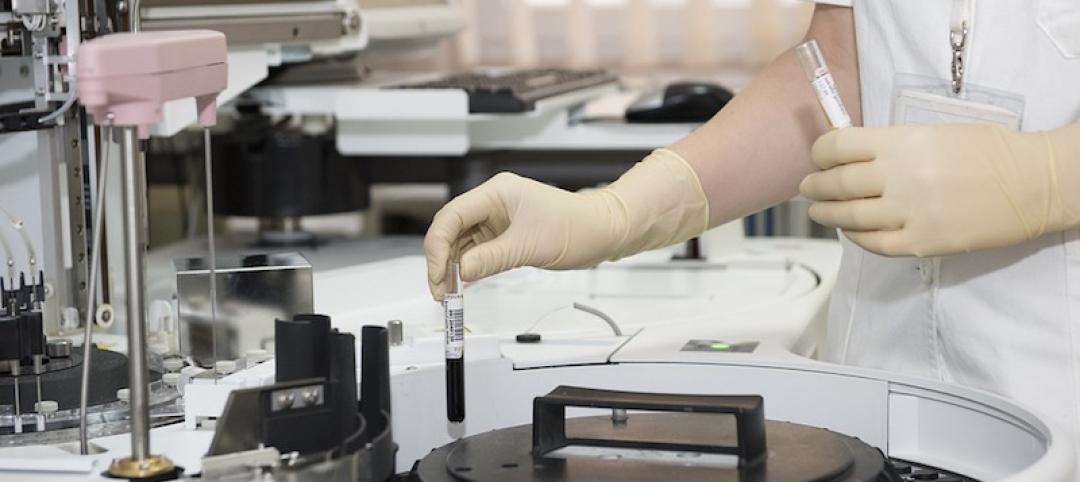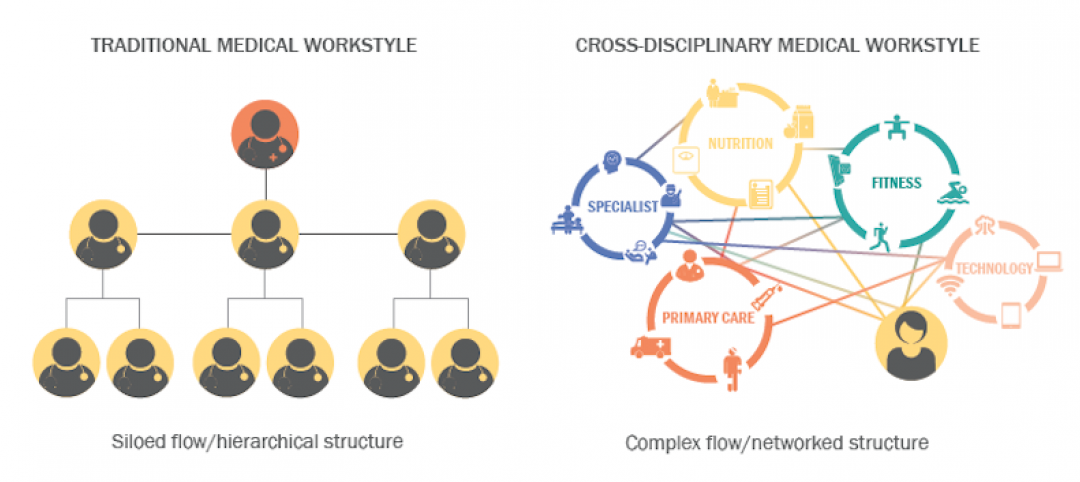In Manhattan, Kan., the National Bio and Agro-Defense Facility (NBAF), an animal disease research facility, has finished construction. Replacing the 68-year-old Plum Island Animal Disease Center, NBAF, when fully operational, will have labs functioning at multiple biosafety levels—including the nation’s first facility with biosafety level 4 containment capable of housing large livestock.
The 707,000-sf facility has been developed to ensure public health and the safety and security of the nation’s food supply. In 574,000 sf of lab space, scientists will safely study and diagnose high-consequence animal pathogens. In addition, an 87,000-sf utility plant houses boilers, chillers, emergency diesel generators, and other support elements for the main lab facility.
In addition to its state-of-the-art laboratories, NBAF will have a Biologics Development Module to explore potential vaccines, diagnostic platforms, and veterinary medical countermeasures.
With construction complete, the U.S. Department of Agriculture has begun to assume control of NBAF from the Department of Homeland Security Science and Technology Directorate. This involves confirming laboratory setup and making sure the equipment functions properly. “These are critical initial steps to ensure all research and diagnostics can be accomplished safely and effectively,” Ken Burton, NBAF deputy director, said in a statement.
The preconstruction, construction, and commissioning contract was valued at $1.06 billion. Despite pandemic-related challenges and delays, the project with commissioning came in under the $1.25 billion budget established by federal officials in 2014.
On the Building Team:
Owner/developer: U.S. Department of Homeland Security Science and Technology Directorate, which turned over operational responsibility to U.S. Department of Agriculture
Design team: NBAF Design Partnership JV (Perkins&Will, Flad Architects, Affiliated Engineers, WSP, and Merrick & Company)
Design architect: Perkins&Will
Architects of record: Perkins&Will and Flad Architects
MEP engineers: Affiliated Engineers, Inc., WSP, and Merrick & Company
Structural engineers: IMEG Corp. and Flad Architects
Construction manager: McCarthy Mortenson JV (McCarthy Building Companies, Inc. and Mortenson Construction)
Related Stories
Laboratories | Jun 18, 2018
A Massachusetts research building is the first to meet WELL’s Gold standard
Design changes in lighting and HVAC systems were required to meet compliance criteria.
Laboratories | May 21, 2018
Virtual Design and Construction Technology helped design MIT’s new accelerator facility
SGA designed the incubator space.
Laboratories | Feb 26, 2018
Three trends shaping labs of the future
It’s all about flexibility and talent for the future of life sciences.
University Buildings | Feb 16, 2018
The University of Washington receives a new Nanoengineering and Sciences Building
The building marks the second phase of a 168,000-sf complex.
Laboratories | Feb 15, 2018
Mass science: Superlab design best practices
What are superlabs? And what makes for a superbly designed superlab?
Reconstruction & Renovation | Feb 7, 2018
Renovations begin on an underground facility that is investigating the nature of dark matter
This LEO A DALY-designed project makes way to produce the world’s most sensitive detector to this point.
Healthcare Facilities | Jan 6, 2018
A new precision dental center embodies Columbia University’s latest direction for oral medicine education
The facility, which nests at “the core” of the university’s Medical Center, relies heavily on technology and big data.
Giants 400 | Dec 13, 2017
Top 45 science + technology architecture firms
HDR, HOK, and Interior Architects top BD+C’s ranking of the nation’s largest science + technology sector architecture and AE firms, as reported in the 2017 Giants 300 Report.
Healthcare Facilities | Nov 6, 2017
Design isn’t enough to foster collaboration in healthcare and research spaces
A new Perkins Eastman white paper finds limited employee interaction at NYU Winthrop Hospital, a year after it opened.
Laboratories | Sep 22, 2017
Designing for how we learn: Maker spaces and instructional laboratories
Here is how the See + Hear + Do = Remember mantra can be applied to maker spaces and instructional labs.



